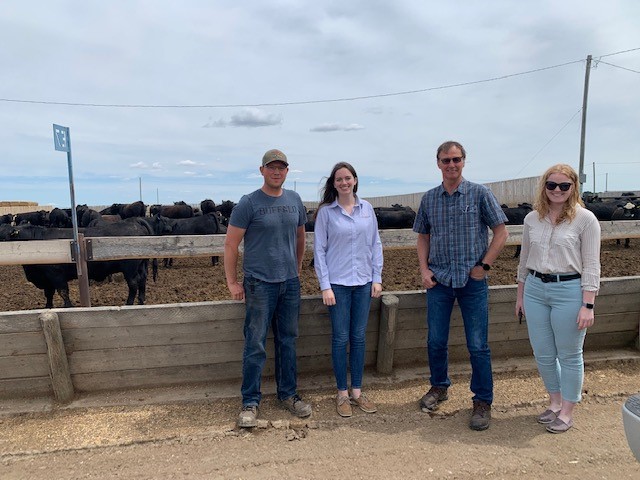Last fall, a drought that affected the western prairies of Canada led to increased demand for imported feed and, thus, a significant increase in U.S. corn and distiller’s dried grains with solubles (DDGS) entering the country.
Following these developments and to re-engage with participants in the Canadian market face-to-face for the first time since 2019, U.S. Grains Council (USGC) staff recently spent time in Calgary and Lethbridge, meeting with importers and end-users of the two products.
The visit by Council staff helped determine what additional support Canadian importers and end-users may need as they continue to procure U.S. feed grains to meet their demand.
“This marketing year has seen record sales of U.S. corn and DDGS into Canada,” said Emily Byron, USGC director of global programs. “The Council took this opportunity to meet with Canadian importers and end users to analyze the challenges that can come with increased imports and identify solutions to ensure a reliable supply of U.S. feed grains to our northern neighbor.”
In Canada, Byron and Paige Stevenson, USGC manager of global trade, along with Canadian consultant Tom Dowler, had the opportunity to connect with grain brokers, merchandisers and swine and cattle producers and visit two transloading facilities in the process of unloading U.S. corn and DDGS. The team also met with hog producers within the Hutterite community to continue conversations about the viability of U.S. feed grains in their swine rations.
“While typically the Alberta region produces most of its own feed grains, this past year with their severe drought left producers and end users with a smaller available supply. This market was very grateful for the strong partnership with the U.S. that allowed them to import U.S. corn and co-products,” Stevenson said.
“We found that Canadian end users are comfortable using U.S. feed grains in their operations. Many end-users have made or are looking to make investments in their operations with the idea that they will continue to use U.S. corn and DDGS in the future.”
About The U.S. Grains Council
The U.S. Grains Council develops export markets for U.S. barley, corn, sorghum and related products including distiller’s dried grains with solubles (DDGS) and ethanol. With full-time presence in 28 locations, the Council operates programs in more than 50 countries and the European Union. The Council believes exports are vital to global economic development and to U.S. agriculture’s profitability. Detailed information about the Council and its programs is online at www.grains.org.

